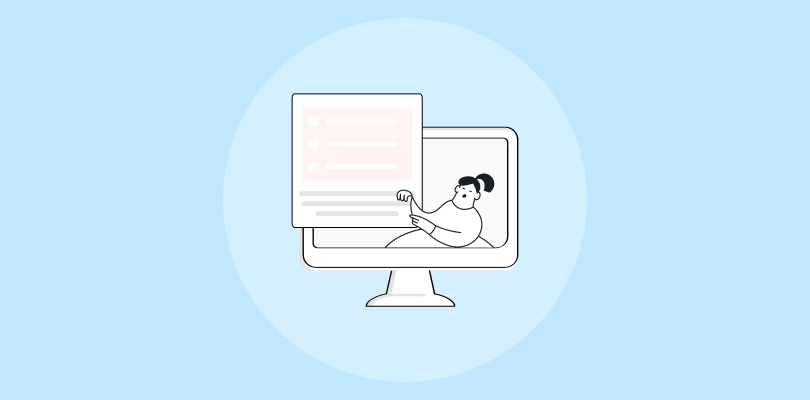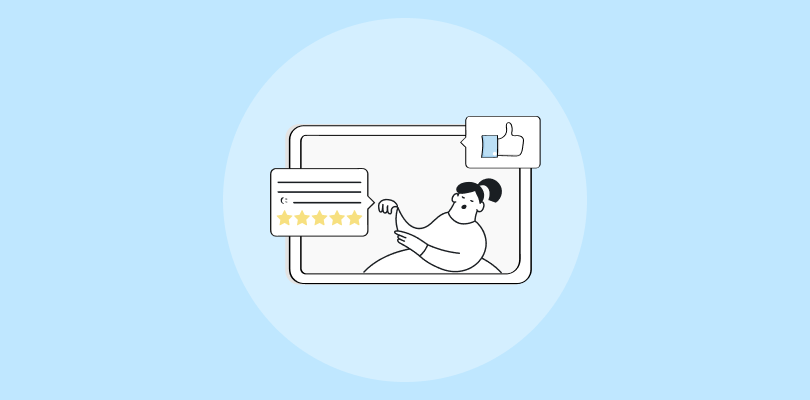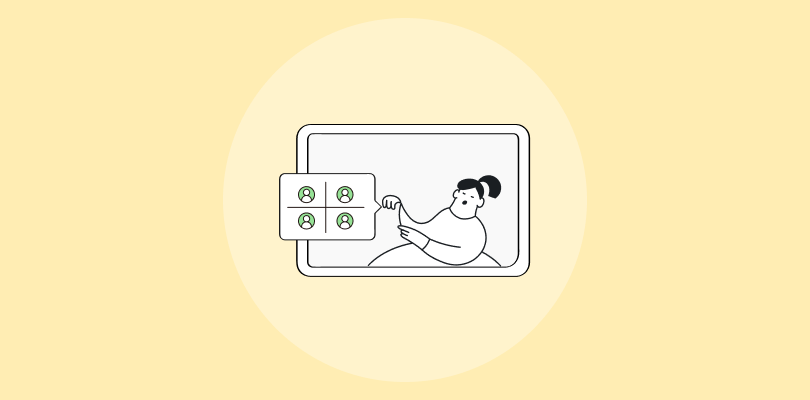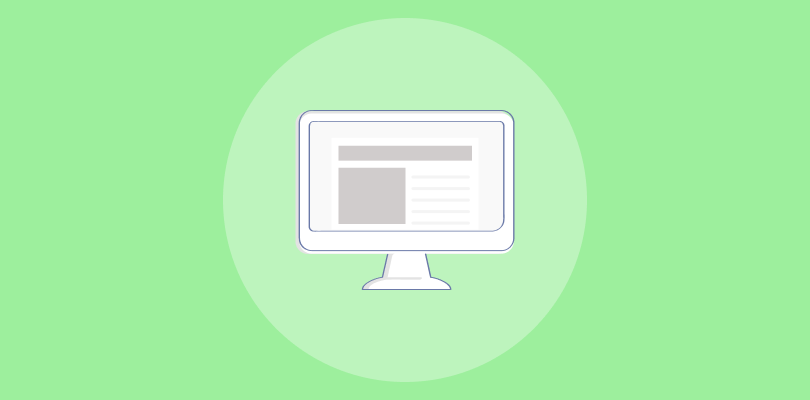Imagine pouring your heart and soul into crafting the perfect webinar, only to be met by the deafening silence of an empty virtual room.
Harsh, right?
But that’s what mostly happens when you do not put effort into promoting a webinar effectively.
Don’t worry. This guide will offer you a detailed view of how to promote a webinar, offering a step-by-step process to transform your online event from a deserted auditorium to a bustling hub of engaged participants.
This not only assists in engaging your audience but also offers better outcomes in terms of attendance, participation, and overall satisfaction, apart from brand awareness and lead generation.
Let’s get started.
How to Promote a Webinar: The Steps to Follow
Before we know the ways to promote a webinar online, it’s essential to note that crafting compelling content with a clear value proposition and creating a dedicated landing page are two crucial ingredients to boost webinar registrations.
Now, let’s proceed with the steps to promote a webinar.
1. Define Your Target Audience
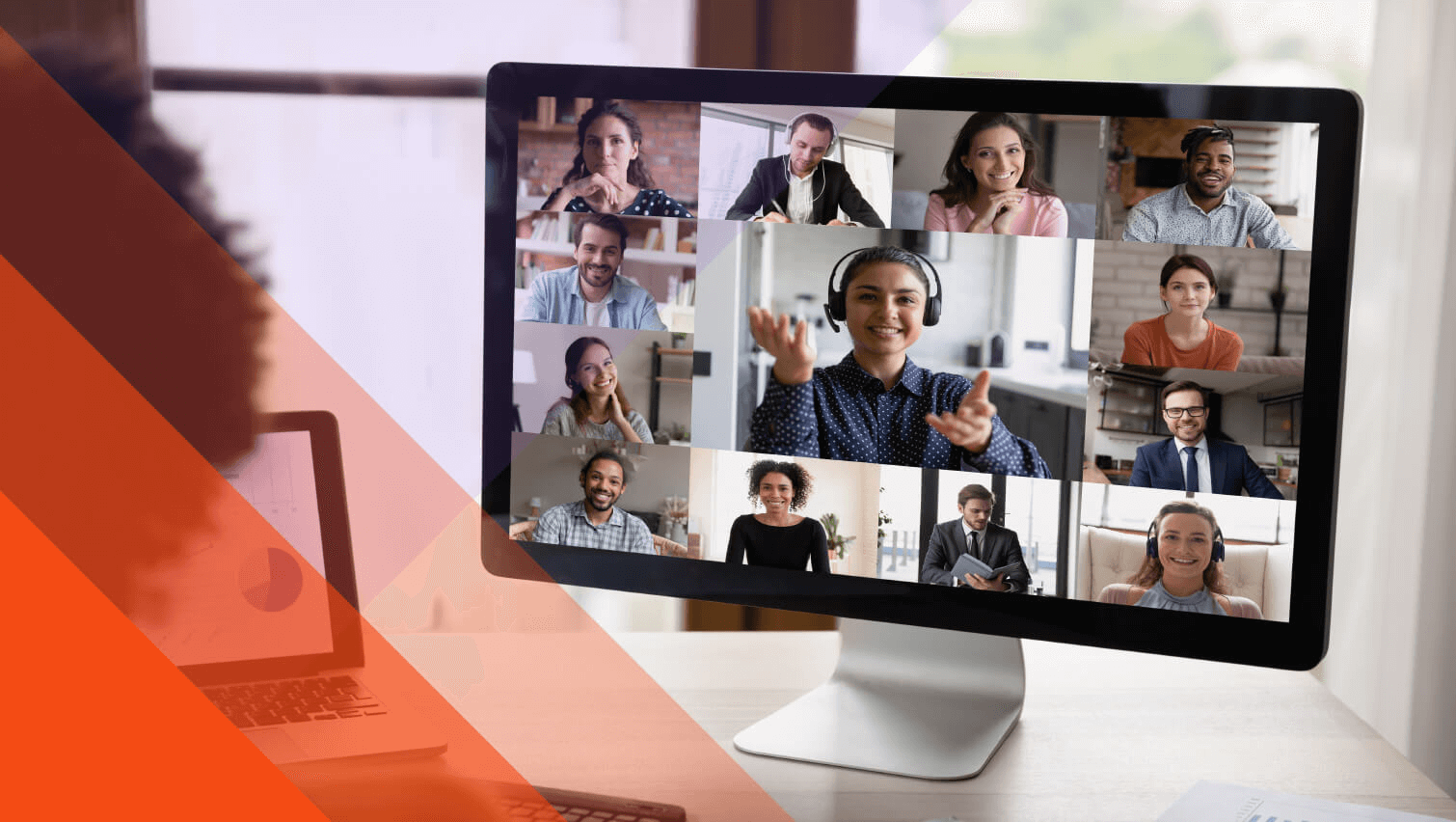
The very first step in ways to promote a webinar is defining your target audience.
This process involves identifying who your ideal participants are, understanding their interests and needs, and tailoring your promotional activities to reach and engage them effectively.
Importance of Defining Your Target Audience
- Increased Relevance and Engagement: Tailoring your webinar content and marketing messages to a specific audience ensures relevance, increasing the likelihood of engagement and attendance.
- Efficient Use of Resources: By focusing your promotional efforts on a specific group, you optimize your marketing budget and resources, avoiding the inefficiency of a “spray and pray” approach.
- Enhanced Personalization: Understanding your audience allows for personalized communication, which is known to boost conversion rates significantly. According to a study by Epsilon, 80% of consumers are more likely to make a purchase when brands offer personalized experiences.
Steps to Define Your Target Audience
- Analyze Your Existing Customer Base: Look at your current customers or audience. Identify common characteristics and interests. This can give you a foundational understanding of who is interested in your webinar.
- Conduct Market Research: Utilize surveys, polls, interviews, and social media analytics to gather data about potential attendees’ demographics, interests, and challenges. Tools like Google Analytics and social media insights can provide valuable information about the types of content that resonate with your potential audience.
- Create Audience Personas: Develop detailed personas representing your ideal attendees. Include demographics, job roles, industry sectors, challenges they face, and what they hope to gain from attending your webinar. For example, if you’re hosting a webinar on digital marketing trends, your persona might be “Digital Marketing Managers looking to stay ahead of the curve in a rapidly evolving industry.”
- Segment Your Audience: Not all your potential attendees will have the same interests or needs. Segment your audience based on criteria like industry, job role, or specific challenges. This allows for more targeted and relevant promotion. For instance, if your webinar covers a broad topic like “Innovation in Tech,” you might segment your audience into IT professionals, tech entrepreneurs, and students in tech-related fields.
- Evaluate and Refine: After defining your target audience, it’s crucial to continually evaluate the effectiveness of your targeting during the promotion phase. Use registration and attendance data to refine your understanding of your audience and adjust your promotional strategies accordingly.
Example of Successful Target Audience Definition
A tech company planning to launch a webinar on the future of blockchain technology might define its target audience as:
- Primary Audience: IT professionals with an interest in blockchain, particularly those working in industries likely to be impacted by blockchain technology, such as finance, healthcare, recruitment communities and logistics.
- Secondary Audience: Tech enthusiasts and students pursuing degrees in computer science or related fields who are keen on understanding blockchain’s potential applications.
By focusing its promotional efforts on these groups through targeted email campaigns, social media ads, and partnerships with relevant industry organizations, the company can significantly increase the relevance of its webinar, leading to higher registration and attendance rates.
2. Utilize Email Marketing
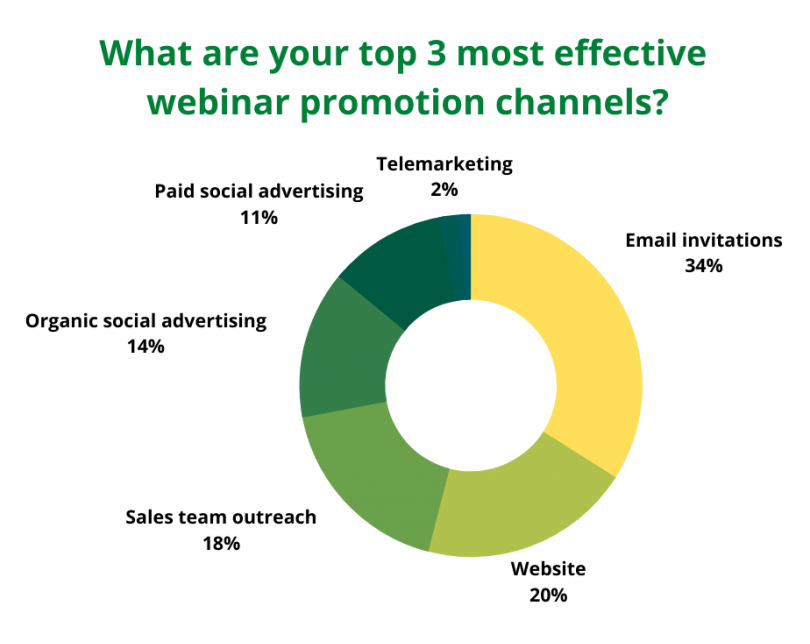
Using email marketing to promote a webinar is a powerful strategy that leverages the direct and personal nature of emails to reach potential attendees.
This approach involves crafting engaging, informative, and persuasive email campaigns to entice people to register for and attend your webinar.
It’s a cost-effective method to communicate the value of your webinar, share important details, and build anticipation among your target audience.
Statistical Insight:
According to a 2020 report by the Content Marketing Institute, email newsletters are among the top three content marketing strategies used by B2B marketers, with 81% reporting their use.
Also, the same report highlights that 31% of B2B marketers say email newsletters are the best way to nurture leads. This underscores the effectiveness of email marketing not just for direct sales but for engaging and nurturing potential customers, such as webinar attendees.
Example of Email Marketing for Webinar Promotion:
Imagine a company, TechSolutions, planning to host a webinar on “The Future of Remote Work.” They start with a segmented email list, sending personalized invitations based on the recipient’s industry, job role, and previous engagement.
The initial email includes a compelling subject line, “Unlock the Future of Work: Exclusive Insights Inside,” designed to pique interest and encourage opens.
The body of the email is visually appealing, with a clean layout, high-quality images of speakers, and bullet points highlighting key takeaways, such as “Innovative remote work technologies” and “Strategies to boost remote team productivity.” A prominent CTA, “Reserve Your Spot,” is placed both at the top and bottom of the email.
As the webinar date approaches, TechSolutions sends out reminder emails. Webinar examples like this often show the importance of strategic timing and content in email marketing.
The first reminder highlights a special guest speaker, a well-known industry leader, with a subject line, “Don’t Miss [Speaker’s Name]’s Exclusive Insights on Remote Work.” The final reminder, sent a day before the webinar, uses urgency, “Last Chance to Join the Future of Work Webinar,” to encourage last-minute registrations.
This example showcases how a well-planned email marketing campaign can effectively promote a webinar, leveraging personalized communication, compelling content, and strategic reminders to maximize attendance and engagement.
Also Read: Email List Boost: More Contacts In One Weird Move
3. Harness Social Media
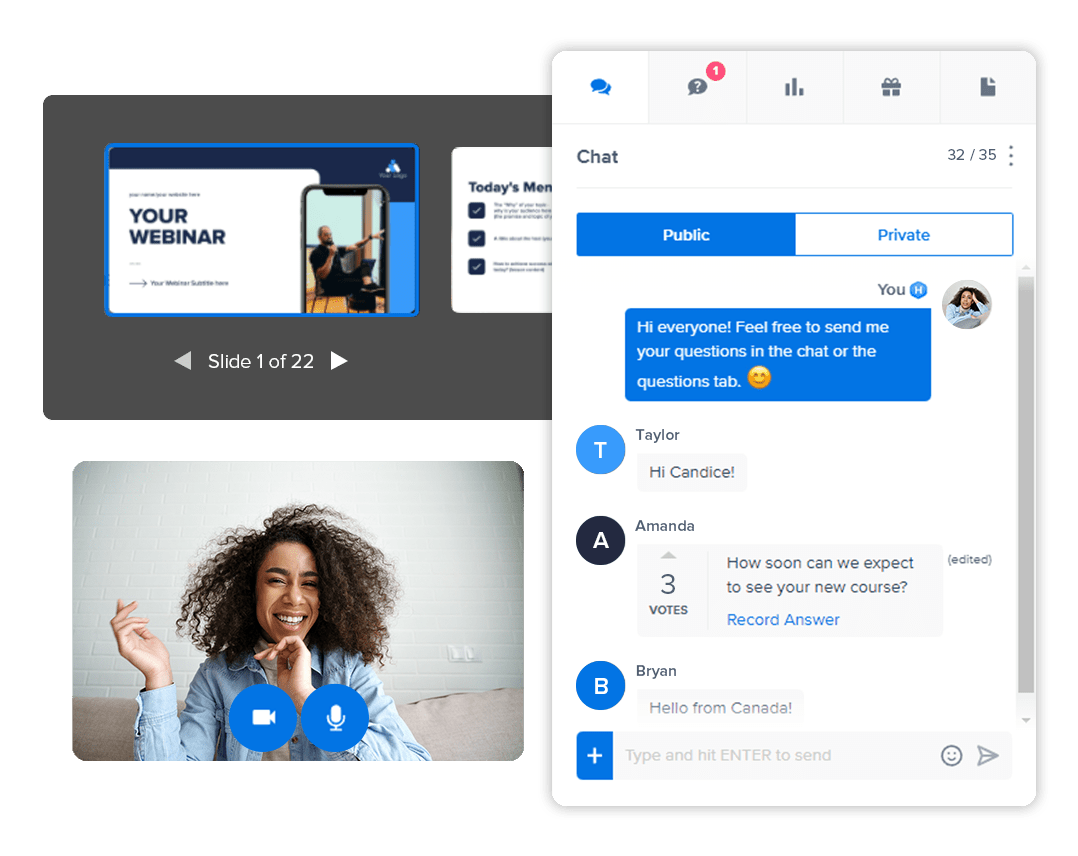
If you are still not using social media or do not know how to promote a webinar on social media, you could be missing out on a lot.
Harnessing social media to promote a webinar is a powerful strategy to increase attendance and engagement. By leveraging different social media platforms, organizers can tap into vast networks of potential attendees.
Major Social Media Platforms to Promote a Webinar
- LinkedIn: Ideal for B2B webinars. LinkedIn users are professionals looking to expand their knowledge and networks. According to LinkedIn, content on the platform reaches 9 billion impressions per week, making it a goldmine for reaching professional audiences.
- Twitter: Great for real-time engagement. Twitter’s fast-paced nature allows for quick updates, reminders about the webinar, and live-tweeting during the event. As of early 2023, Twitter reported having over 330 million monthly active users, indicating a broad audience base.
- Facebook: With over 2.8 billion monthly active users as of late 2022, Facebook’s vast user base and targeted advertising capabilities make it an excellent platform for reaching a wide array of demographics.
- Instagram: Perfect for visual promotions. Using stories, posts, and IGTV can help capture attention through engaging visuals. Instagram reported over 1 billion active monthly users as of 2022, highlighting its potential reach.
Tips to Generate Social Media Engagement
- Visuals and Videos: Posts with visuals see 2.3 times more engagement on social media than those without. For Instagram, images showing faces get 38% more likes. Use compelling graphics and short videos to tease webinar content.
- Hashtags: Tweets with hashtags receive 2x more engagement. Research and use relevant hashtags to increase visibility.
- Teasers and Highlights: Share snippets or key insights from the webinar content to generate interest.
- Targeted Ads: Social media platforms offer targeted advertising options, allowing you to reach specific demographics, interests, and behaviors.
- Retargeting: Use retargeting ads to remind users who have shown interest in your webinar but haven’t registered yet.
- Interactive Posts: Ask questions, run polls, and create interactive content to engage your audience and build anticipation.
- Respond to Queries: Be active in responding to comments and messages to build a community around your webinar.
Also Read: Webinars on Mobile Devices: Should You?
4. Collaborate with Partners

Collaborating with partners to promote a webinar is a strategic approach that can significantly extend the reach of your promotional efforts and enhance the overall success of your event. Leveraging partnerships allows for a pooling of resources, audiences, and expertise, creating a win-win situation for all parties involved.
Look for partners whose audiences align with your webinar topic. These can be industry influencers, non-competing businesses in your sector, or even companies that offer complementary products or services.
According to LinkedIn, 80% of B2B leads come from LinkedIn, making it an excellent platform to identify and reach out to potential partners.
So, collaborating with partners to promote a webinar not only amplifies your reach but also enriches the content and experience for attendees. By leveraging each other’s strengths and audiences, you can significantly increase the impact and success of your webinar.
Word of Caution: It’s important to note that the digital marketing landscape is constantly evolving. So, staying updated with the latest trends and data is crucial for maximizing the success of your collaborative efforts.
Also Read: CoHost Webinars: How to Crush It, Together
5. Run Paid Ads
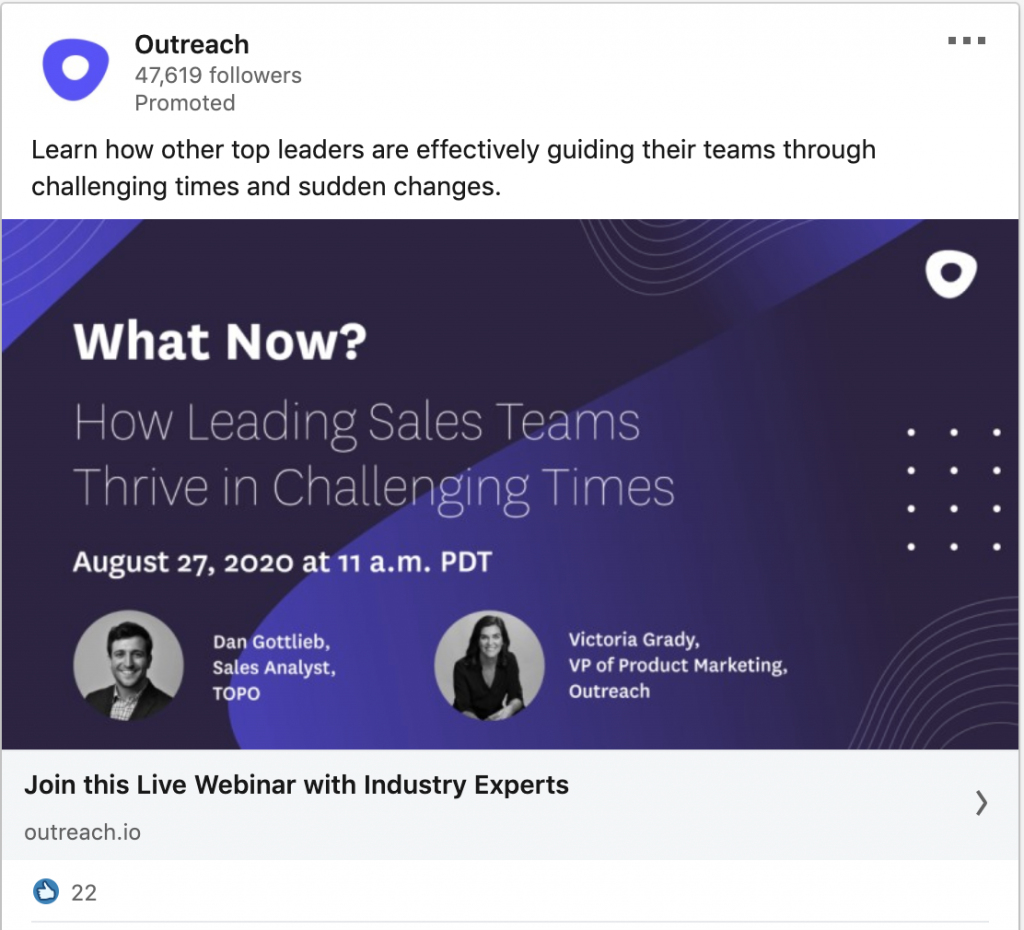
Do you wish to know how to promote a webinar online and get the best outcomes?
Well, promoting a webinar effectively requires a multifaceted approach, and paid advertising plays a crucial role in reaching a wider and more targeted audience.
Paid ads can significantly increase the visibility of your webinar, attract a larger audience, and ultimately lead to higher conversion rates.
Choosing the Right Platform for Ads
- Facebook and Instagram Ads: With over 2.8 billion monthly active users on Facebook and over 1 billion on Instagram, these platforms offer a vast audience. The detailed targeting options allow you to reach people by interests, behavior, location, and more. Carousel ads, video ads, and event ads can be particularly effective for webinar promotion.
- LinkedIn Ads: Ideal for B2B webinars, LinkedIn allows you to target professionals based on industry, job title, seniority, and company size. Sponsored content, message ads, and event ads can drive significant registrations.
- Google Ads: Using keywords related to your webinar topic, you can attract people actively searching for related information. Consider both search ads and display ads for broader reach.
- Twitter Ads: Promote your webinar to a targeted audience based on interests, geography, and user behavior. Twitter’s event targeting can also be useful for finding users interested in similar events.
Best Ad Practices
- A/B Testing: Test different ad creatives, CTAs, and targeting strategies to find what works best with your audience. This can help improve your ROI over time.
- Retargeting: Use retargeting ads to capture the attention of users who visited your registration page but did not sign up.
- Budgeting: Allocate your budget based on the platform’s performance. Start with a broader distribution and then reallocate according to the results.
- Tracking and Analytics: Use conversion tracking tools to measure the effectiveness of your ads. This data is crucial for optimizing your strategy and improving future campaigns.
Bonus Tip: Start promoting your webinar at least two weeks in advance. This gives you enough time to optimize your campaigns and reach enough people.
6. Offer Early-Bird Discounts or Incentives
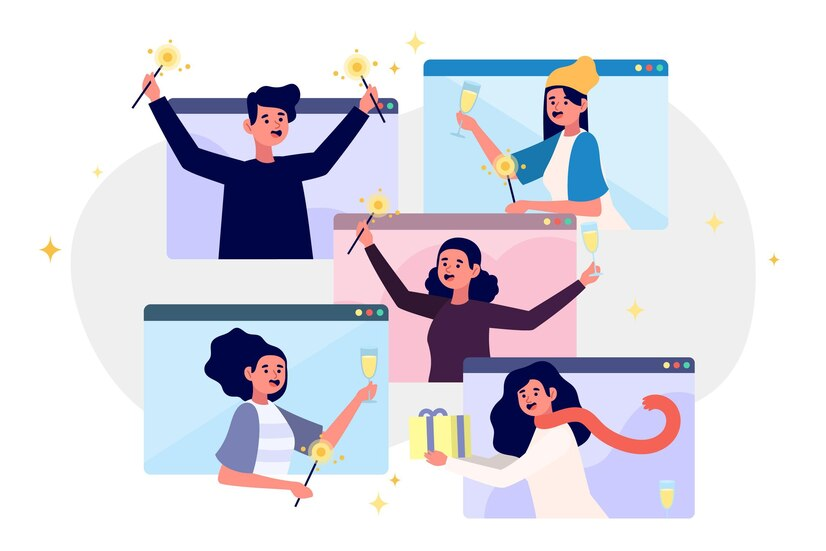
Offering early-bird discounts or incentives effectively boosts webinar registrations by creating urgency and adding value. You can set attractive discount rates and limit the offer’s availability to encourage quick action. Plus, promote the deal across various channels, including social media, email, and your website, tailoring messages to each platform.
Consider bundling additional benefits, like exclusive content, to make the offer more appealing. Utilize testimonials to enhance credibility and follow up with interested individuals who haven’t registered.
You can adjust your strategy based on the campaign’s performance to ensure maximum engagement and fill your webinar seats efficiently.
Learn How to Create the Most Compelling Webinar Offers
7. Host Pre-Webinar Engagement Activities
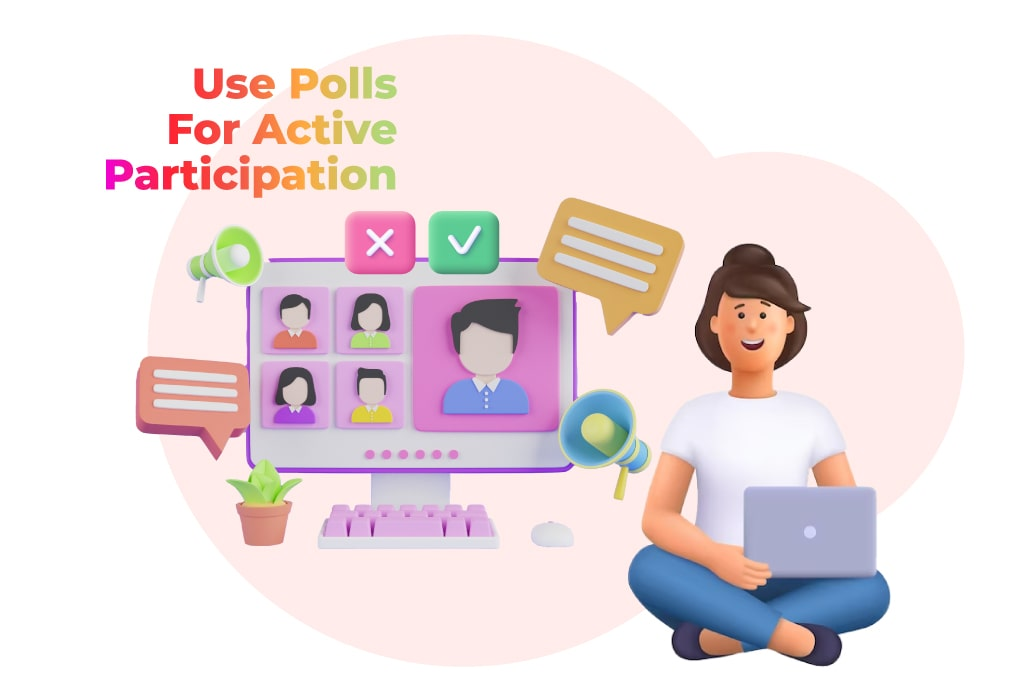
Hosting a webinar is an effective way to engage with your target audience, share knowledge, and promote products or services. However, the success of a webinar doesn’t only depend on the content delivered during the event itself but also significantly on the pre-webinar engagement activities.
These activities not only help in promoting the webinar but also in building a relationship with potential attendees, increasing registrations, and ensuring a higher turnout.
Secret Tip: The best days to host webinars are Wednesday and Thursday, as these days have shown higher attendance rates. According to reports, 28% of registrants attended webinars on Thursday and 27% on Wednesday. Tuesdays are also relatively effective, with a 24% attendance rate.
Types of Pre-Webinar Engagement Activities
1. Teaser Videos: Short, engaging videos that give a sneak peek into the webinar content, speakers, or the value attendees will gain. These can be shared on social media, via email, or embedded on your landing page.
2. Live Social Media Sessions: Host live sessions on platforms like Instagram, Facebook, or LinkedIn to discuss the webinar topics, answer questions, and engage with your audience in real time.
3. Interactive Polls and Surveys: Conduct polls or surveys related to your webinar topic on social media or via email. This not only engages your audience but also gives you insights into their interests and preferences.
4. Contests and Giveaways: Run contests or giveaways where participants can win a free consultation, an exclusive piece of content, or other relevant prizes for registering or sharing the webinar with their n`etwork.
5. Webinar Series: If your webinar is part of a series, use each session to promote the next one. This can help maintain interest and keep your audience engaged longer.
6. Educational Content: Offer valuable content such as eBooks, whitepapers, or case studies related to the webinar topic when someone registers. This provides immediate value and builds trust.
By implementing these pre-webinar engagement activities, you can significantly enhance your webinar’s visibility, attract a larger audience, and increase the chances of your event’s success.
8. Follow-Up Activities Post-Webinar
Creating a successful webinar is not just about how to market a webinar and presentation during the event itself but also about effective follow-up activities.
These activities not only help in promoting your brand or message further but also in engaging your audience post-event. It can lead to increased loyalty and conversions.
Most Effective Follow-Up Activities Post-Webinar
1. Send Thank You Emails
The first step in your follow-up should be to send out thank you emails to all attendees and registered non-attendees. This shows appreciation for their interest and can be a gentle reminder of your brand or the message you’re promoting.
2. Share the Webinar Recording
Not everyone who registers can attend the live event. Sharing the webinar recording with all registrants via email or on your social media platforms ensures that no one misses out. This also provides an opportunity to reach a wider audience, as attendees can easily share the recording with their networks.
3. Create and Share Additional Content
Based on the webinar, create additional content such as blog posts, infographics, or short videos that summarize key points, answer common questions, or delve deeper into specific topics discussed. This content can be shared on your website, through social media, or via email newsletters, helping to keep your audience engaged and reinforcing your message.
4. Engage on Social Media
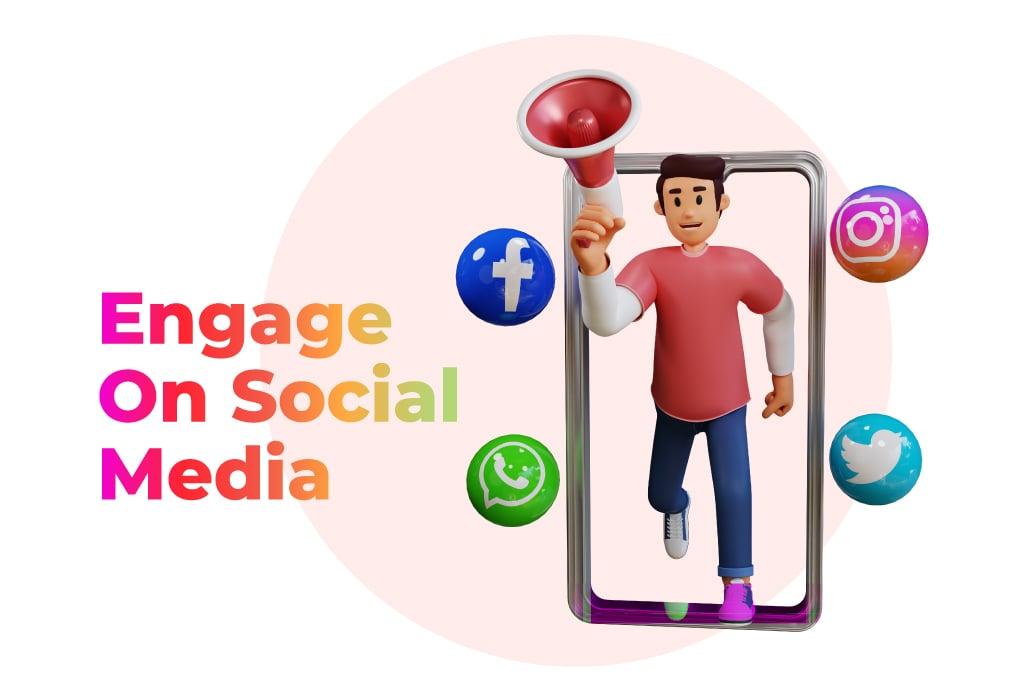
Post-webinar engagement on social media is crucial. Share highlights, key takeaways, or interesting quotes from the webinar on your social media channels. Encourage participants to share their thoughts, learnings, or feedback on the webinar using a specific hashtag. This not only promotes your webinar content but also fosters a community around your brand.
5. Follow Up with a Survey
Sending out a post-webinar survey to attendees and registrants is an excellent way to gather feedback on what worked well and what could be improved. It also offers insights into the topics or questions that your audience is interested in, which can be useful for planning future webinars or content.
6. Offer a Special Promotion
To encourage conversions and further engagement, offer a special promotion to webinar attendees. This could be a discount on your products or services, a free consultation, or exclusive access to additional resources. Make sure this offer is time-limited to create a sense of urgency.
7. Host a Q&A Session
If there were unanswered questions during the webinar or if new questions arise from the webinar content, consider hosting a follow-up Q&A session. This can be done live on social media platforms or as a separate, smaller webinar. It’s an excellent way to keep the conversation going and provide additional value to your audience.
8. Leverage Testimonials and Feedback
Use positive feedback and testimonials from your webinar attendees in your marketing materials. Whether it’s social media posts, your website, or email campaigns, showcasing real feedback can significantly enhance your credibility and attract new audiences.
Ready to Promote Your Webinars Online?
While it is essential to create good webinars, promoting them goes the extra mile to help you engage your audience and get better outcomes in terms of attendance, participation, and overall satisfaction. Effective promotion can also increase brand awareness, lead generation, and, potentially, revenue growth as more people become aware of and interested in what you offer.
You can use a smart tool such as WebinarNinja. It is an all-in-one tool for creating the most engaging webinars for coaches, teachers, trainers, and consultants.
It lets you create live, automated, hybrid, and series webinars according to your requirements and promote them effectively to reach your audience better.
Sounds like an overall win-win.
Want to host a webinar for free?
Use WebinarNinja to teach, improve marketing, and grow your sales.




